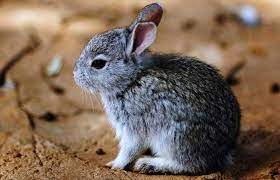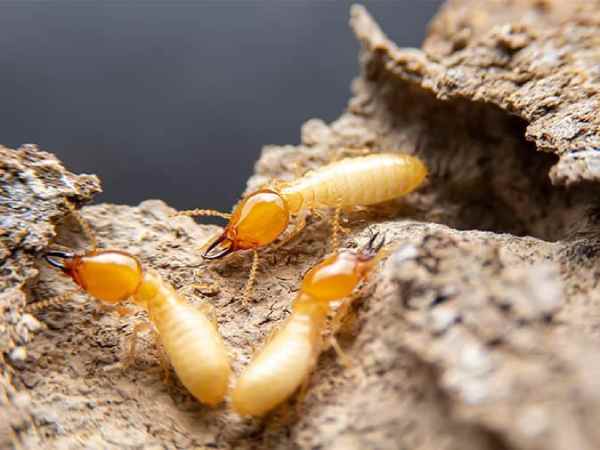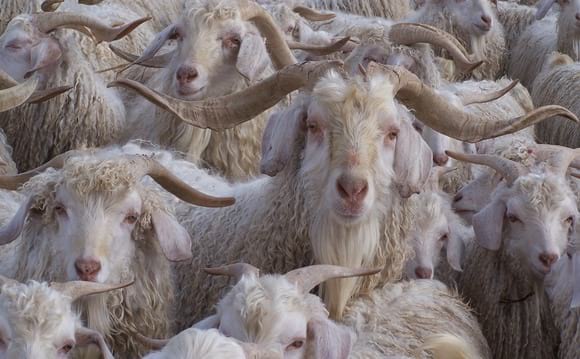Geraniums, with their vibrant petals and fragrant leaves, have long been cherished in gardens and homes for their aesthetic appeal. However, these delightful flowers aren’t just a treat for the human senses; they also hold a curious allure for certain members of the animal kingdom. In this article, we dive deep into the intriguing world of “What Animals Eat Geraniums” to uncover the hidden stories of herbivores and omnivores who find these blooming beauties irresistible.
While many associate geraniums with their role as ornamental plants, these resilient botanical wonders have a lesser-known reputation as a source of sustenance for various creatures. From inquisitive insects that seek nectar from their blossoms to herbivores that graze on their leaves, the dietary choices of animals involving geraniums offer a fascinating insight into the delicate balance of nature. Join us as we explore the unusual appetites and strategies that link animals to these beloved garden gems, shedding light on the complex web of relationships that thrive in our natural world.

Brief Overview of Geraniums as Popular Garden Plants:
Geraniums, scientifically known as Pelargonium, have earned their place as popular garden plants due to their remarkable versatility and aesthetic appeal. These perennial plants come in a wide range of colors, including vibrant reds, pinks, and whites, making them a staple in gardens and landscapes worldwide. Their ability to adapt to various climates and soil conditions, from arid deserts to temperate gardens, further solidifies their status as beloved garden plants.
Beyond their visual charm, geraniums also release a pleasant fragrance from their leaves, enhancing the overall garden experience. Whether they’re gracing hanging baskets, containers, or garden beds, geraniums are cherished for their low maintenance and ability to bloom prolifically throughout the growing season.
Overview of various animals that pose a threat to geraniums
Deer:

Deer are herbivorous mammals known for their selective feeding habits. While they primarily graze on a wide variety of plants, geraniums are not their preferred food source. These animals may occasionally nibble on geraniums if they find themselves in an area with limited access to other forage options. In general, geraniums are not a staple in a deer’s diet, and they are more likely to target tastier and more abundant vegetation. Gardeners often use fencing or repellents to protect their geraniums from deer browsing.
Rabbits:

Rabbits are notorious for their voracious appetites when it comes to plants, and geraniums are not exempt from their nibbling tendencies. When hungry and in the absence of better food sources, rabbits may snack on geraniums, particularly young, tender shoots. Gardeners often face challenges in protecting their geraniums from rabbit damage, employing strategies like fencing and planting rabbit-resistant plants nearby to deter these herbivorous pests.
Snails and Slugs:

Gardeners frequently contend with the presence of snails and slugs in their gardens, and geraniums can be on the menu for these slimy creatures. These gastropods have a penchant for consuming a wide range of plants, including geranium leaves. To safeguard geraniums from snail and slug damage, gardeners employ various methods such as using traps, barriers, and organic or chemical control measures.
Insects:

A variety of insects may feed on geranium foliage, although they are typically more of a concern for gardeners than larger animals. Some common insect pests that can affect geraniums include caterpillars, aphids, and beetles. These insects can damage the leaves and flowers of geranium plants, potentially impacting their overall health and appearance. Gardeners often use insecticides or other pest control methods to manage infestations and protect their geraniums from these tiny but destructive creatures.
Goats:

In some regions, goats are known for their indiscriminate grazing habits and may consume a wide range of plants, including geraniums, if they are present in their pasture. While geraniums are not a typical part of a goat’s diet, these animals can occasionally nibble on them if other forage options are scarce. It’s essential for goat owners to ensure their animals have access to appropriate forage and nutrition to prevent them from damaging ornamental plants like geraniums.
Cattle:

Cattle, primarily grazers, typically feed on grasses and other forage plants. However, in rare cases where geraniums or other ornamental plants are included in their pasture, cattle may nibble on them if alternative forage is limited. To protect geraniums and other ornamental plants from cattle browsing, appropriate fencing and management practices are essential.
Tortoises:

Certain species of tortoises, such as pet tortoises, may consume geranium leaves as part of their diet. However, geraniums are not a common or primary food source for tortoises. These herbivorous reptiles generally have a varied diet consisting of a wide range of plants and vegetables. If you keep tortoises as pets, it’s important to provide them with a well-balanced diet that meets their nutritional requirements, which may include some leafy greens like geranium leaves as an occasional treat.
Reasons Why Animals Target Geraniums:
While geraniums primarily serve as decorative plants in gardens, they attract animals for several reasons. The nectar-rich blossoms are a magnet for pollinators such as bees, butterflies, and hummingbirds, contributing to garden biodiversity. However, it’s not only insects that are drawn to these plants.
Some herbivores, such as rabbits and deer, find the leaves and stems of geraniums delectable. Additionally, the aromatic scent of geraniums, while pleasing to humans, can also pique the curiosity of animals, leading them to investigate and sometimes consume the plant. Understanding these attractions is vital in managing potential damage to geraniums.
Identifying Animal Damage on Geraniums:
Recognizing the signs of animal damage on geraniums is crucial for timely intervention. Common indicators include leaves with chewed edges, stems that appear broken or gnawed, or missing flower buds. In some instances, you may discover droppings or tracks near the damaged plants, providing clues about the culprits. Properly identifying the specific animals responsible for the damage is essential for implementing effective prevention and protection strategies.
Prevention and Protection Strategies:
To safeguard geraniums from animal damage, gardeners can employ a range of strategies. Installing physical barriers, such as fences or wire mesh, can deter herbivores like rabbits and deer. Non-toxic repellents, like garlic or hot pepper sprays, can also discourage animal foraging.
Companion planting with herbs and flowers that repel pests or attract beneficial insects can create a less appealing environment for herbivores. Pruning and maintaining geraniums can help minimize attractive scents and vulnerable growth points. For pollinators, consider planting alternative nectar sources nearby to divert their attention away from geraniums.
Safe and Humane Solutions:
When addressing animal pests in the garden, prioritizing safe and humane solutions is essential. Avoiding harmful chemicals or poisons not only protects wildlife but also ensures the safety of other garden inhabitants, including pets and beneficial insects. Choose non-lethal methods, such as scent-based repellents or motion-activated deterrents, to discourage unwanted animal activity. Encourage coexistence by providing habitat and food sources for wildlife in designated areas of your garden, allowing geraniums and animals to thrive harmoniously.
Final Words:
Geraniums, cherished for their captivating beauty, have earned a prominent place in gardens worldwide. Understanding why animals are drawn to these plants and implementing preventative measures is key to preserving their splendor while coexisting harmoniously with wildlife. By adopting safe and humane solutions and fostering a garden ecosystem that supports both geraniums and their animal visitors, gardeners can strike a balance that ensures the enduring beauty of these beloved garden plants.
Reference:
- https://www.evergreenseeds.com/holes-in-geranium-leaves/
- https://www.burpee.com/blog/encyclopedia__geranium-article.html
- https://extension.umn.edu/yard-and-garden-insects/tobacco-budworms

Zahra Makda
Growing up enjoying the beauty of my village, a good passion for nature developed in me from childhood. Following my passion for the natural world, I have chosen zoology for my graduation, during my undergraduate degree, I participated in many nature trails, bird watching, rescues, training for wildlife conservation, workshop, and seminars on biodiversity. I have a keen interest in invertebrate biology, herpetology, and ornithology. Primary interests include studies on taxonomy, ecology, habitat and behavior.









